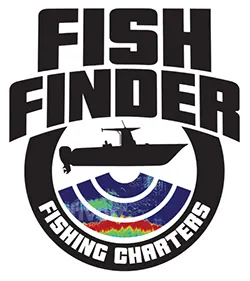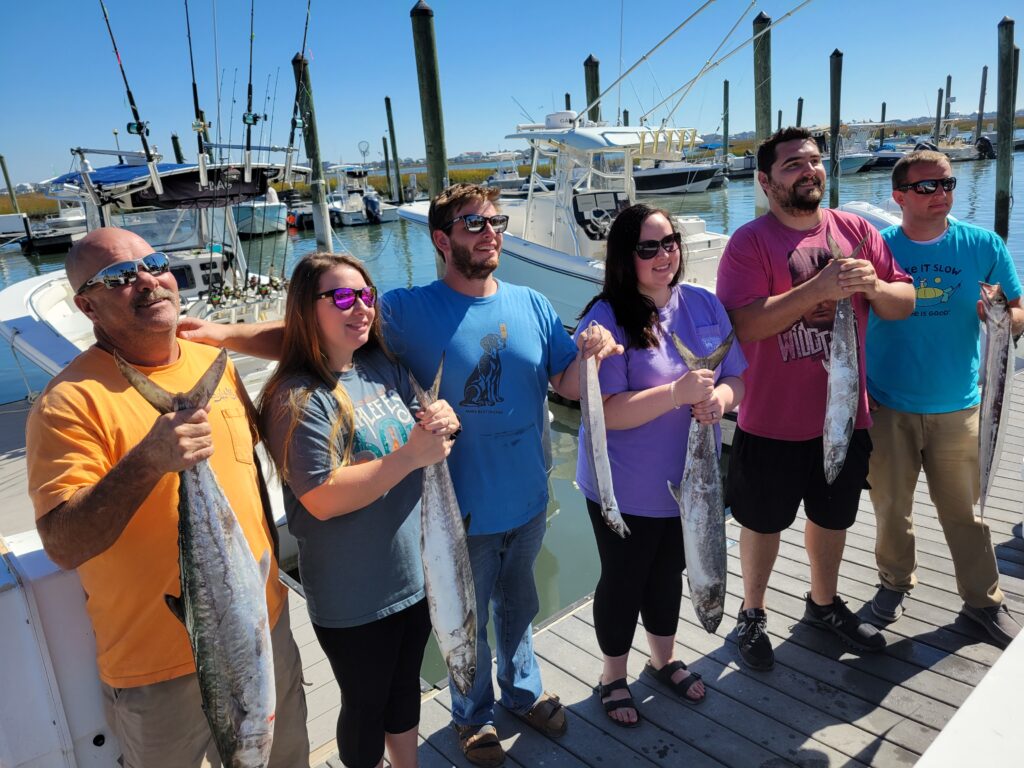Murrells Inlet, South Carolina, is a vibrant and dynamic fishing destination, renowned for its diverse array of fish species. Whether you’re casting your line in the tranquil inlet, the winding river, or the expansive ocean, the waters of Murrells Inlet promise an exciting fishing adventure. This blog will delve into the various fish species found in these different environments, offering insights into their habitats, behaviors, and the best techniques for catching them.
The Inlet
Murrells Inlet is famous for its picturesque marshes and estuaries, providing an ideal habitat for a variety of fish species. The mix of saltwater and freshwater creates a rich and productive ecosystem.
Redfish (Red Drum)
Description: Redfish are one of the most sought-after species in the inlet. Recognizable by their copper-bronze color and distinctive black spot near the tail, these fish can grow quite large and are known for their powerful runs when hooked.
Habitat and Behavior: Redfish prefer shallow waters, especially areas with grassy flats, oyster beds, and marsh edges. They are often found in schools and are most active during the early morning and late afternoon.
Fishing Techniques: Using live bait such as shrimp, mullet, or crabs can be highly effective. Artificial lures like soft plastics, gold spoons, and topwater plugs also work well. Sight fishing, where you spot the fish before casting, is a popular method.
Flounder
Description: Flounder are flatfish with both eyes on one side of their head, making them masters of camouflage. They have a unique ability to blend into the sandy or muddy bottom.
Habitat and Behavior: Flounder are typically found near sandy bottoms, channels, and around structures such as docks and piers. They are ambush predators, lying in wait for prey to swim by.
Fishing Techniques: Dragging a bait or jig slowly along the bottom can entice a bite. Live minnows, mullet, and shrimp are excellent bait choices. Using a jig head with a soft plastic lure that mimics a small fish or shrimp is also effective.
Sheepshead
Description: Sheepshead are known for their distinctive vertical black stripes and human-like teeth, which they use to crush shellfish.
Habitat and Behavior: These fish are often found around structures such as pilings, docks, and rocky areas where they feed on barnacles and crustaceans.
Fishing Techniques: Using fiddler crabs, shrimp, or barnacles as bait is ideal. A small hook and a light sinker are recommended to feel the subtle bites of sheepshead. Fishing near structures where they are feeding is crucial.
The River
The Waccamaw River, winding through the coastal landscape, offers a different set of fishing opportunities compared to the inlet. The freshwater environment supports a variety of species that thrive in slower-moving waters.
Largemouth Bass
Description: Largemouth bass are a popular freshwater game fish, known for their aggressive strikes and acrobatic fights.
Habitat and Behavior: Largemouth bass prefer areas with plenty of cover, such as submerged logs, vegetation, and undercut banks. They are most active in the early morning and late evening.
Fishing Techniques: Topwater lures, spinnerbaits, and plastic worms are highly effective. Fishing near structures and cover can increase your chances of success. Live bait, such as shiners, can also be used.
Catfish
Description: Catfish are bottom dwellers with whisker-like barbels around their mouths. They come in various species, including channel catfish, blue catfish, and flathead catfish.
Habitat and Behavior: Catfish are often found in deeper holes, around submerged structures, and in slow-moving sections of the river. They are most active at night or during low light conditions.
Fishing Techniques: Using cut bait, chicken liver, or stink bait can attract catfish. A simple bottom rig with a heavy sinker and a strong hook is recommended. Night fishing can be particularly productive.
Crappie
Description: Crappies are small, schooling fish with distinctive black or white markings. They are popular for their delicate, flaky flesh.
Habitat and Behavior: Crappie prefer areas with submerged structures such as brush piles, fallen trees, and docks. They are most active during the spring spawning season.
Fishing Techniques: Using small jigs, minnows, or live bait under a bobber can be effective. Light tackle and a slow, steady retrieve are key to enticing crappie to bite.
The Ocean
The Atlantic Ocean off the coast of Murrells Inlet provides access to a wide range of deep-sea fishing opportunities. The rich marine environment supports an abundance of species that attract anglers from all over.
King Mackerel
Description: King mackerel are large, fast fish known for their powerful runs and leaping ability. They have a streamlined body and sharp teeth.
Habitat and Behavior: These fish are often found around reefs, wrecks, and offshore structures. They tend to follow schools of baitfish and are most active during the warmer months.
Fishing Techniques: Trolling with live bait such as menhaden or using artificial lures like spoons and diving plugs is effective. King mackerel are attracted to fast-moving bait, so a quick retrieve is recommended.
Snapper and Grouper
Description: Snapper and grouper are prized for their delicious flesh. Snapper species like red snapper have a bright red color, while grouper are typically more muted with large mouths and stout bodies.
Habitat and Behavior: These bottom-dwelling fish are found around reefs, wrecks, and rocky outcrops. They tend to stay close to structures where they can ambush prey.
Fishing Techniques: Using heavy tackle and bottom rigs with live or cut bait is effective. Dropping the bait near structures where snapper and grouper are known to congregate increases your chances of a catch.
Mahi-Mahi (Dolphin Fish)
Description: Mahi-mahi are vibrant, colorful fish with bright green, yellow, and blue hues. They are known for their acrobatic leaps when hooked.
Habitat and Behavior: Mahi-mahi are pelagic fish, meaning they live in the open ocean. They are often found near floating debris or seaweed patches where they hunt for smaller fish.
Fishing Techniques: Trolling with brightly colored lures or rigged ballyhoo is a popular method. Mahi-mahi are attracted to fast-moving bait and are known for striking aggressively.
Ready To Go Catching?!
Fishing in Murrells Inlet, South Carolina, offers a diverse and rewarding experience, whether you’re casting in the calm inlet, the serene river, or the vast ocean. Each environment hosts a unique array of fish species, providing opportunities for anglers of all skill levels. By understanding the habits and habitats of these fish and employing the right techniques, you can enhance your fishing adventures and create lasting memories on the beautiful waters of Murrells Inlet. So, what are you waiting for? Grab your friends & family and book one of our fishing charters today! Let’s get to catching! You’ll be glad you did!




